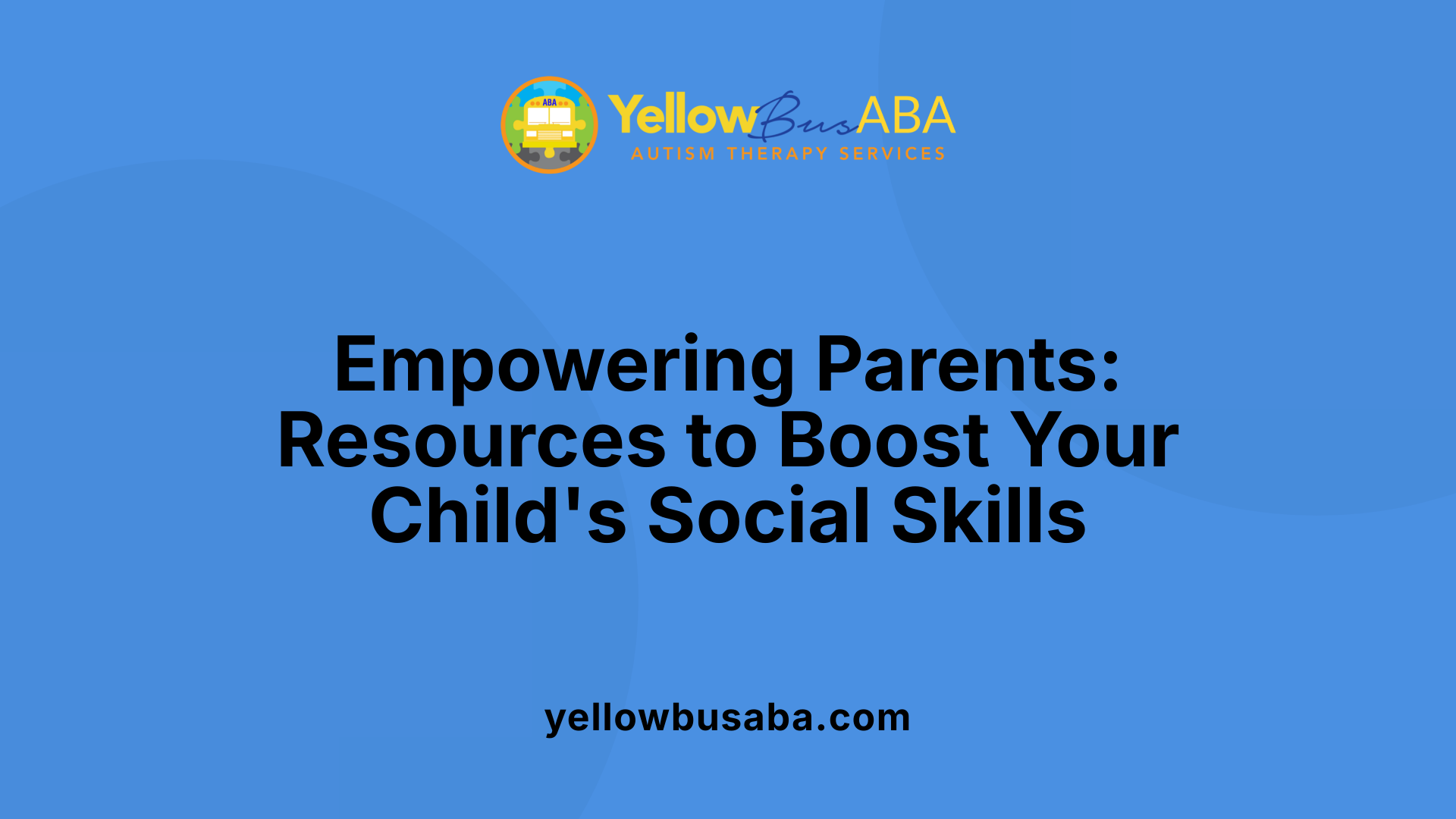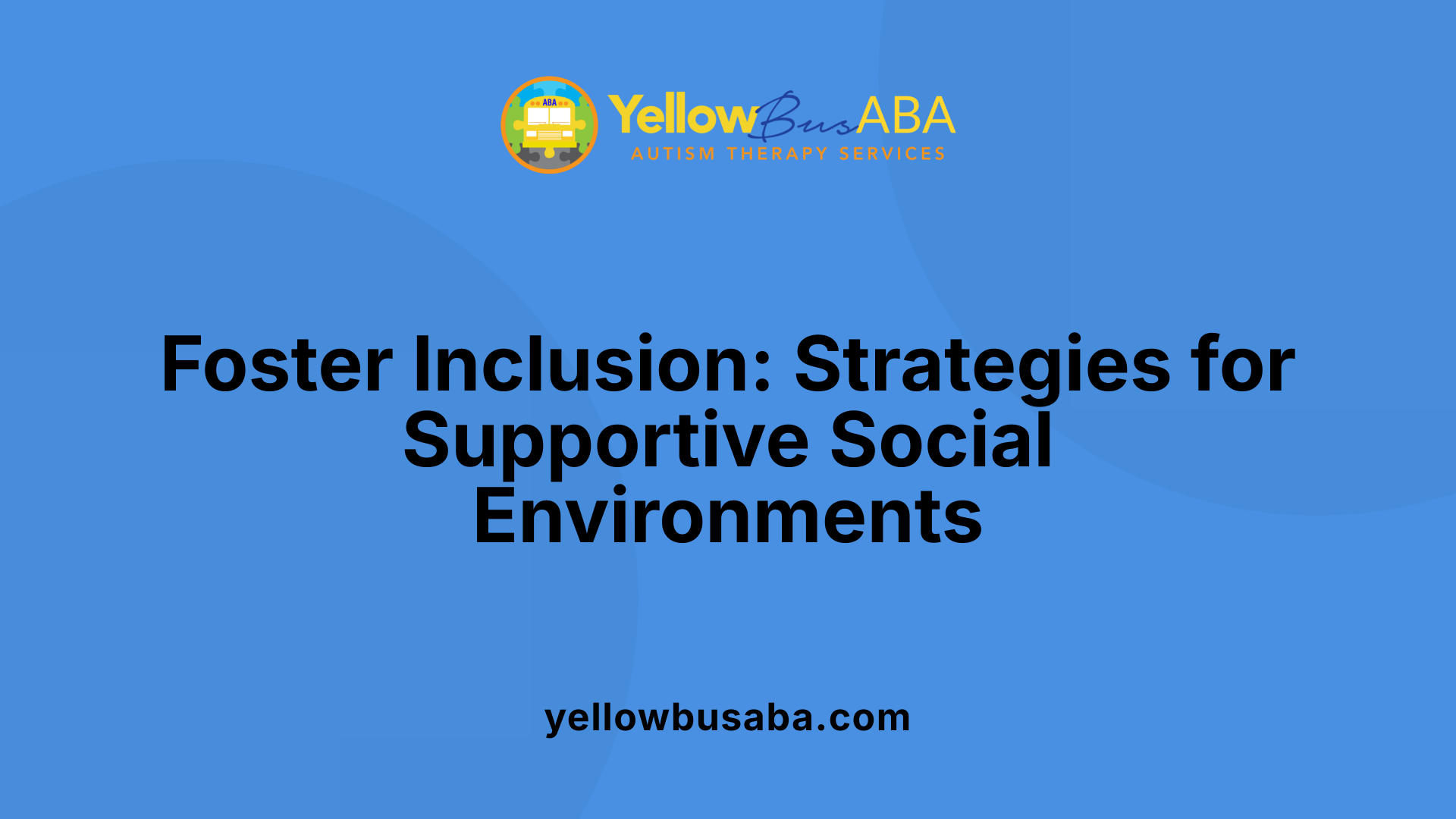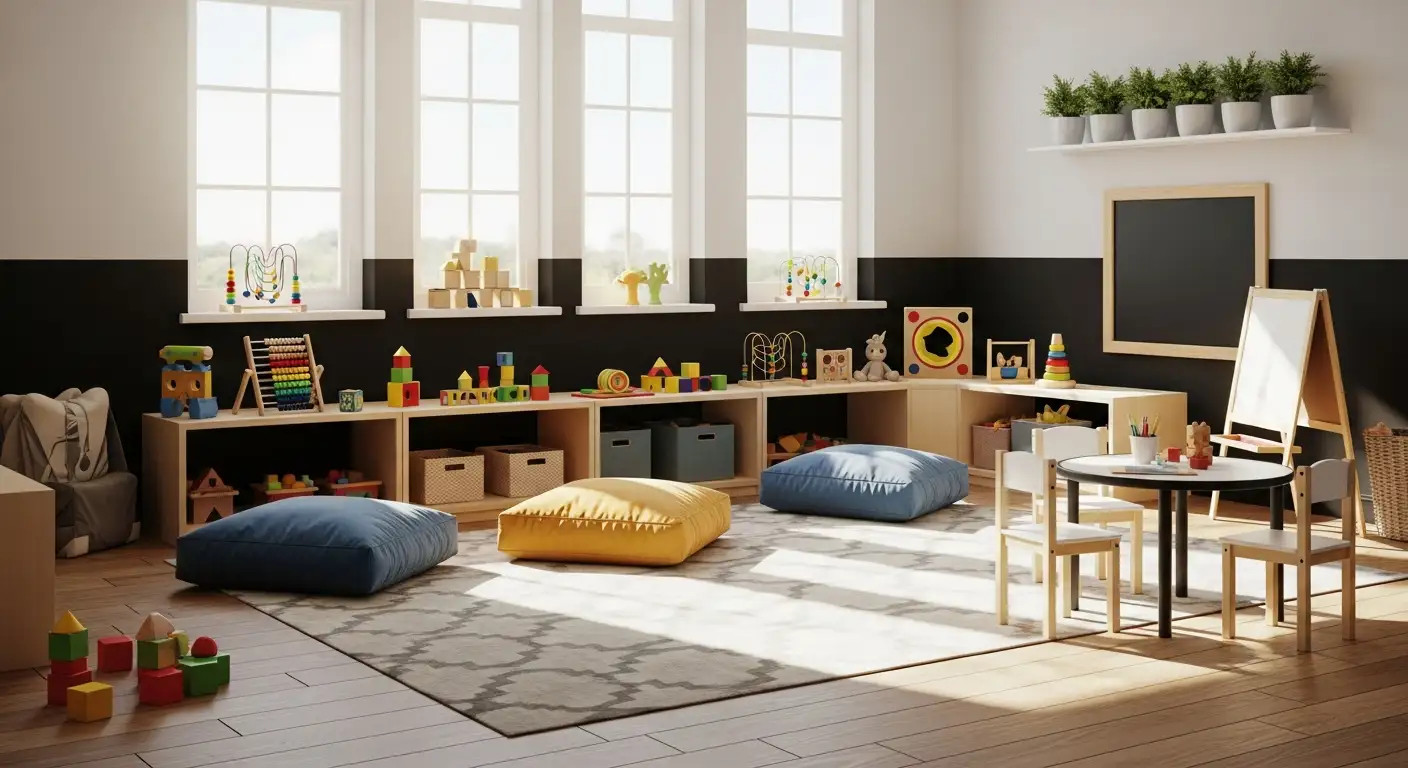Understanding How ABA Supports Social Development in Autism
Autism spectrum disorder presents unique social challenges that can impact a child's ability to connect with peers. Applied Behavior Analysis (ABA) has emerged as a leading evidence-based approach to help children with autism develop vital social skills, fostering meaningful peer relationships and enhancing their overall quality of life. This article explores how ABA therapy works, its benefits in strengthening social and peer interactions, and the resources available for families committed to supporting their children's social development.
The Foundations of ABA Therapy for Social Skill Building
How does ABA therapy support children with autism in developing social skills?
ABA therapy plays a crucial role in helping children with autism improve their social abilities. It does so through a systematic approach that teaches social behaviors step-by-step. Instead of expecting children to learn complex social skills all at once, ABA breaks these behaviors down into smaller, manageable parts.
One of the core strategies involves positive reinforcement, where children are rewarded for demonstrating desired social behaviors. This encouragement motivates children to practice and adopt new skills. For example, children learn to make eye contact, respond to questions, or share toys by repeatedly practicing these actions in a supportive environment.
Techniques such as social stories and role-playing are frequently used to illustrate social norms and appropriate responses. Video modeling and social skills groups provide additional opportunities for children to observe and imitate positive social interactions. These activities help children understand body language, facial expressions, and conversational cues.
To ensure that children can apply these skills in various contexts, ABA emphasizes generalization—meaning children can transfer learned behaviors from therapy to home, school, and community settings. Involving parents, teachers, and caregivers is essential for reinforcement outside of structured sessions.
Furthermore, ABA addresses communication challenges by teaching the basics of initiating conversations, turn-taking, and emotional regulation. This comprehensive focus helps children develop more meaningful and positive social interactions, boosting their confidence and social inclusion.
Because ABA programs are individualized, plans are regularly adjusted based on ongoing progress. In practice, this structured yet flexible method supports children not just in learning new skills but also in integrating them into their daily lives for long-term social success.
Structured Programs and Natural Environments for Skill Transfer

What role do structured ABA programs play in social skill development?
Structured ABA (Applied Behavior Analysis) programs are designed to break down complex social behaviors into small, manageable steps. These programs use evidence-based techniques like modeling, prompting, reinforcement, and social skills training to teach children how to interact appropriately. Through consistent practice, children learn crucial social cues such as eye contact, turn-taking, and sharing. Programs are tailored to each child's unique needs and are constantly monitored and adjusted based on progress.
How are natural settings like schools and community environments used to promote social skills?
Real-life environments like schools and community settings are essential for generalizing social skills learned in therapy. In schools, ABA services integrate with classroom routines by using visual supports, peer modeling, and environment modifications. These settings offer children opportunities to practice social behaviors in natural, dynamic situations, reinforcing skills like conversation, cooperation, and social pragmatics. Group sessions and peer interactions serve as natural platforms for children to observe, imitate, and refine their social behaviors.
How do peers and families contribute to social skill development?
Family involvement and peer interactions play a pivotal role in transferring skills to everyday life. Peer-mediated interventions encourage children to engage with classmates in structured activities, promoting skills like sharing, taking turns, and initiating conversations. Family strategies include peer playtimes, encouraging group activities, and using visual supports at home to reinforce social concepts. These collaborative efforts enhance motivation, foster meaningful relationships, and build a child's confidence in social settings.
What methods and strategies are used in ABA therapy to enhance social interactions?
ABA therapy employs various methods to boost social skills, such as:
- Behavioral Skills Training (BST): Combines instruction, rehearsal, and feedback.
- Social stories and scripts: Help children understand social norms and expectations.
- Video modeling: Demonstrates appropriate behaviors for imitation.
- Role-playing: Allows practice of social situations in a controlled environment.
- Discrete Trial Training (DTT): Breaks down skills into discrete steps for mastery.
These strategies are personalized, consistently evaluated, and integrated into daily routines to ensure children develop meaningful social capabilities.
Evidence Supporting ABA’s Impact on Social and Peer Skills

What evidence supports the effectiveness of ABA therapy in improving the social skills and peer relationships of children with autism?
Research studies and controlled trials strongly support the positive influence of ABA therapy on social development for children with autism. Meta-analyses and rigorous experimental designs have consistently found that children receiving ABA interventions tend to show marked improvement in their social behaviors.
ABA techniques such as role-playing, positive reinforcement, and video modeling help teach children crucial social skills. These include making eye contact, sharing toys, taking turns, and initiating conversations—all fundamental for forming peer relationships.
Additionally, longitudinal studies reveal that the benefits of early ABA intervention can extend well into later childhood and adolescence. Children often develop better social communication, joint attention, and cooperative play early on, which supports greater social inclusion and independence.
While ongoing research continues to refine methods and expand understanding, the current evidence firmly establishes ABA as an effective approach for enhancing social skills, leading to meaningful improvements in how children interact with their peers and develop friendships.
Resources for Parents and Caregivers to Support Social Development
 Parents and caregivers play a vital role in enhancing social skills in children with autism through ABA therapy. A variety of educational resources are available to help them understand and support their child's development.
Parents and caregivers play a vital role in enhancing social skills in children with autism through ABA therapy. A variety of educational resources are available to help them understand and support their child's development.
Parent training programs and workshops provided by organizations like Autism Speaks and local support groups offer valuable guidance. These programs introduce families to essential ABA concepts, such as positive reinforcement, prompting, and the use of visual supports like social stories and visual schedules. Such resources help parents implement strategies that promote communication, social interaction, and peer engagement at home and in community settings.
Educational guides and online tools are also accessible for ongoing learning and support. Apps like First-Then Visual Schedule and Proloquo2Go assist in creating visual supports, tracking progress, and encouraging independence through structured routines. These tools complement in-person therapy and empower families to reinforce skills consistently.
Guidance on reinforcement techniques and visual supports can significantly improve social outcomes. Parents are encouraged to use positive reinforcement to motivate children and help them respond to social cues. Visual supports, including social stories and schedules, make complex social behaviors understandable and manageable for children.
Professional advice from Board Certified Behavior Analysts (BCBAs) and organizations such as the Behavior Analyst Certification Board ensures that families access evidence-based, personalized strategies. Regular collaboration with therapists and educators ensures that intervention plans align with the child's evolving needs.
Participation in community workshops, seminars, and support groups fosters shared learning and emotional support. These opportunities promote family engagement, strengthen caregiver knowledge, and enhance collaboration with professionals, ultimately supporting children’s social growth.
| Resource Type | Examples | Benefits |
|---|---|---|
| Parent training programs | Workshops by Autism Speaks | Practical skills, peer support |
| Online tools and apps | First-Then, Proloquo2Go | Visual supports, progress tracking |
| Educational guides | ABA manuals, online articles | Clear explanations, strategy ideas |
| Professional guidance | Consultations with BCBAs | Personalized plans, ongoing support |
Supporting social development in children with autism involves a comprehensive approach combining parent education, practical tools, and professional collaboration. Leveraging these resources can lead to meaningful progress and foster lasting social skills.
Long-Term Outcomes of Social Skills Development via ABA

What are the long-term outcomes of social skills development through ABA therapy?
Applied Behavior Analysis (ABA) therapy aims to improve social skills in children with autism through structured, evidence-based techniques like positive reinforcement, role-playing, and real-life social practice.
One of the main long-term benefits of ABA is enhanced social functioning, which includes better peer interactions, friendships, and independence in social settings.
Children who participate in consistent and prolonged ABA programs, often lasting two years or more, tend to show significant improvements in their ability to communicate and interact with others. These developments contribute to greater social maturity and adaptive behavior in daily life.
Research shows that children starting early, especially around 18 months, and receiving intensive therapy, demonstrate lasting gains. They often develop better eye contact, conversational skills, and the ability to understand social cues.
Children with lower baseline skills—those who initially struggled more—generally benefit the most, reaching levels that support smoother integration into social environments. Such improvements can include taking turns, sharing, and responding appropriately during interactions.
Factors like active parental involvement, supportive family environments, and collaboration between therapists, educators, and caregivers play crucial roles. These elements enhance the quality and duration of therapy, leading to better outcomes.
Overall, ABA therapy has proven to foster meaningful, long-term changes, helping children with autism lead more socially engaging, independent lives. The ongoing development of social skills positively impacts their mental health, academic success, and future social and vocational opportunities.
| Outcome Aspect | Description | Additional Notes |
|---|---|---|
| Social Integration | Better peer relationships and friendships | Promotes belonging and emotional well-being |
| Communication Skills | Improved language, eye contact, and pragmatic skills | Essential for effective social interaction |
| Independence in Social Situations | Able to navigate social environments with less support | Leads to greater autonomy in daily life |
| Long-Term Benefits | Reduced maladaptive behaviors and increased social resilience | Supports ongoing development and success |
By focusing on these areas, ABA therapy supports children in achieving lasting improvements in their social lives, shaping healthier, more connected futures.
The Critical Role of Early Intervention and Collaboration
Starting intervention early, ideally before age 3
Early intervention plays a vital role in helping children with autism develop essential social skills. Implementing ABA therapy from as young as 18 months can lead to long-lasting improvements in communication, social interactions, and adaptive behaviors. The earlier treatment begins, the better the chances of fostering meaningful peer relationships and reducing behavioral challenges.
Involvement of families and schools
Collaboration between families, educators, and trained professionals such as Board Certified Behavior Analysts (BCBAs) is crucial for consistent progress. Families can reinforce skills learned during therapy at home through activities like peer playtimes and group activities. Schools integrate ABA strategies through visual supports, peer-mediated interventions, and classroom adjustments, creating natural social environments where children can practice and refine their skills.
Regular assessment and individualized planning
ABA programs are tailored to each child's unique needs and are regularly re-evaluated to ensure effectiveness. Data collection tools such as the Vineland Adaptive Behavior Scales and VB-MAPP help track progress objectively. This continuous assessment allows for personalized adjustments, optimizing the development of social skills like sharing, eye contact, turn-taking, and initiating conversations.
| Aspect | Approach | Benefit |
|---|---|---|
| Early Initiation | Starting ABA therapy before age 3 | Long-term social and communication improvements |
| Family and School Involvement | Ongoing collaboration, home support, inclusive education | Reinforces learning, promotes generalization of skills |
| Regular Monitoring | Frequent assessments and plan adjustments | Ensures individualized and effective intervention |
Early, collaborative, and individualized intervention strategies are essential for helping children with autism build strong social skills, enabling richer peer relationships, better independence, and improved quality of life.
Building Inclusive and Supportive Environments for Social Growth

How do peer-mediated interventions help children with autism develop social skills?
Peer-mediated interventions involve children with autism learning social behaviors through interactions with their typically developing peers. These interventions enable children with autism to observe, imitate, and practice social skills such as sharing, turn-taking, and initiating conversations in natural social settings. Peers are often trained to model and reinforce appropriate behaviors, which enhances motivation and engagement. This collaborative approach promotes meaningful social connections and helps children with autism feel more included.
How are inclusive education settings beneficial for social development?
Inclusive education environments are classrooms where children with autism learn alongside their neurotypical peers. Such settings provide consistent opportunities for social interaction, helping children learn social norms and communication skills through everyday activities. Inclusion supports the development of friendships and peer acceptance, which are vital for emotional well-being. Moreover, inclusive classrooms often incorporate structured social skills programs, visual supports, and environment modifications to maximize participation and learning.
How does technology support social skills development in children with autism?
Technology tools such as tablets, apps, and social stories serve as effective aids in teaching social skills. Visual supports like picture schedules and social stories help children understand social cues and appropriate responses. Interactive apps can simulate social scenarios, allowing children to practice responses in a safe, controlled setting. Technology fosters engagement, motivation, and independence while helping children generalize social skills to real-life situations. Using these tools alongside ABA strategies reinforces learning and supports personalized development.
| Strategy | Description | Benefit |
|---|---|---|
| Peer-mediated interventions | Training peers to facilitate social interactions | Enhances natural social skill development |
| Inclusive classrooms | Teaching children with autism alongside peers | Promotes peer acceptance and skill generalization |
| Use of technology | Employing apps and visual supports | Improves understanding and practice of social cues |
Overall, creating environments that promote social interaction through tailored interventions, inclusive settings, and technology is crucial. These approaches foster stronger peer relationships, build confidence, and support long-term social success for children with autism.
Fostering Social Success in Children with Autism
With its structured, individualized approach grounded in scientific evidence, ABA therapy offers children with autism the tools they need to develop strong social skills and build meaningful peer relationships. When combined with early intervention, family involvement, and inclusive practices, ABA enhances children’s ability to navigate social environments, leading to long-lasting positive outcomes. Supporting social development through tailored strategies not only benefits individual children but also promotes greater acceptance and understanding within communities, paving the way for more inclusive and supportive societies.
References
- Social Skills: Helping Children Build Meaningful Connections
- 4 Ways ABA Can Help Children With Autism
- The Effectiveness of ABA Therapy in Helping Autistic Children ...
- Social Skill Growth Through Peer Interaction - Scottsdale PBS
- How ABA Therapy Improves Social Skills in Autism | Blue Jay
- Applied Behavior Analysis (ABA) | Autism Speaks
- Helping Parents Understand Applied Behavior Analysis: Creating a ...
- 5 ABA Therapy Tools & Resources for Parents
- 10 Essential ABA Therapy Resources for Parents of Children with ...






